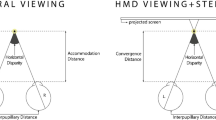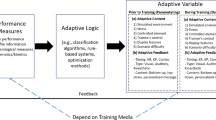Abstract
This paper gives an overview of new low cost firearms simulator based on a motion-tracking sensor - Microsoft Kinect that provides aiming results that are highly correlated with real live results. This simulator uses Microsoft Kinect SDK based application that utilizes the input from the embedded Kinect sensors to calculate the aiming point at the screen, recognizes the user’s gestures and the audio inputs, and emulates commands in a simulation based on those inputs. We have created three test modules that are using different calibration points and mathematical frameworks to accurately transform the gunshot targeting point in proper pixel coordinate. The initial experiments with the proposed firearms simulator show that the results that are accomplished by humans using the simulator and the results accomplished in the real live firearms shooting have a high correlation coefficient of 0.82. This shows that the proposed simulator can be used in firearms training and is a good alternative to the existing expensive simulators available on the market.









Similar content being viewed by others
References
Abaffy J, Spedicato E (1989) ABS projection algorithms: mathematical techniques for linear and nonlinear equations. Prentice-Hall Inc.
Cheng K, Takatsuka M (2006) Estimating virtual touchscreen for fingertip interaction with large displays. In: Proceedings of the 18th Australia conference on Computer-Human Interaction: Design: Activities, Artefacts and Environments, ACM, pp 397–400
Craciun E-G, Grisoni L, Pentiuc S-G, Rusu I (2013) Novel interface for simulation of assembly operations in virtual environments. Adv Electr Comput Eng 13(1):47–52
Fischler MA, Bolles RC (1987) Random sample consensus: a paradigm for model fitting with applications to image analysis and automated cartography. Readings in Computer Vision, pp 726–740
Fournier H, Lapointe J-F, Kondratova I, Emond B, Munteanu C (2012) Crossing the barrier: a scalable simulator for course of fire training. In: Interservice/Industry Training, Simulation & Education Conference (I/ITSEC). vol 2012, no. 1, National Training Systems Association
Galatas G, Potamianos G, Makedon F (2012) Audio-visual speech recognition using depth information from the Kinect in noisy video conditions. 5th International Conference on Pervasive Technologies Related to Assistive Environments, PETRA
Gonzalez-Jorge H, Riveiro B, Vazquez-Fernandez E, Martínez-Sánchez J, Arias P (2013) Metrological evaluation of Microsoft Kinect and asus xtion sensors. Measurement 46(6):1800–1806
Jing P, Ye-peng G (2013) Human-computer interaction using pointing gesture based on an adaptive virtual touch screen. Signal Process Pattern Recognit 6(4):81–92
Kim H, Kim Y, Ko D, Kim J, Lee EC (2014) Pointing gesture interface for large display environments based on the Kinect skeleton model. Future Information Technology, pp 509–514
Kim H, Kim Y, Lee EC (2014) Method for user interface of large displays using arm pointing and finger counting gesture recognition. Sci World J 2014:1–9
Kramer J, Burrus N, Echtler F, Daniel HC, Parker M (2012) Introducing the Kinect. Apress, pp 1–9
Le VB (2014) Hand detecting and positioning based on depth image of Kinect sensor. Int J Inf Electron Eng 4(3)
Lee WJ, Heo H, Park RK (2013) A novel gaze tracking method based on the generation of virtual calibration points. Sensors 13(8):10802–10822
Li Y, Monaghan DS, O’Connor NE (2014) Real-time gaze estimation using a kinect and a HD webcam. Lect Notes Comput Sci 506–517
Liu J-L, Chuan H-C, Kuan P-C (2014) Assessment of range of shoulder motion using Kinect. Gerontechnology 13(2)
Lu G, Zhou Y, Li X, Kudo M (2015) Efficient action recognition via local position offset of 3D skeletal body joints. Multimed Tools Appl 1–16
Molina JP, García AS, Martínez J, González P (2013) A low-cost VR system for immersive FPS games. In Simposio Español de Entretenimiento Digital, SEED 2013, pp 119–130
Pham N-Q, Le H-S, Nguyen D-D, Ngo T-G (2015) A study of feature combination in gesture recognition with Kinect. Adv Intell Syst Comput 459–471
Phillips GM, Taylor PJ (1996) Systems of non-linear equations. Theory Appl Numer Anal 323–334
Pino A, Tzemis E, Ioannou N, Kouroupetroglou G (2013) Using Kinect for 2D and 3D pointing tasks: performance evaluation. Lect Notes Comput Sci 358–367
Reddien GW (2004) Newton-Raphson methods. Encyclopedia of Statistical Sciences
Suma B, Lange B, Rizzo AS, Krum DM, Bolas M (2011) FAAST: the flexible action and articulated skeleton toolkit. IEEE Virtual Reality Conference
Walk AAJ, Rupp A (2010) Pearson product-moment correlation coefficient. Encyclopedia of Research Design, 1023–1027
Wei G-Q, De Ma S (1994) Implicit and explicit camera calibration: theory and experiments. IEEE Trans Pattern Anal Mach Intell 16(5):469–480
Williamson B (2012) Multi-kinect tracking for dismounted soldier training. The Interservice/Industry Training, Simulation & Education Conference (I/ITSEC), vol 2012 no 1. National Training Systems Association. http://www.eecs.ucf.edu/~jjl/pubs/12378.pdf
Yeo HS, Lee BG, Lim H (2013) Hand tracking and gesture recognition system for human-computer interaction using low-cost hardware. Multimed Tools Appl 1–29
Zaranek A, Ramoul B, Yu HF, Yao Y, Teather RJ (2014) Performance of modern gaming input devices in first-person shooter target acquisition. 32-nd Annual ACM Conference on Human Factors in Computing Systems – CHI EA’14
Zhang Z (2012) Microsoft kinect sensor and its effect. IEEE Multimedia 19(2):4–10
Zhu, Wang Y (2014) Human posture recognition based on Kinect depth images. Advanced Computer Control
Author information
Authors and Affiliations
Corresponding author
Rights and permissions
About this article
Cite this article
Bogatinov, D., Lameski, P., Trajkovik, V. et al. Firearms training simulator based on low cost motion tracking sensor. Multimed Tools Appl 76, 1403–1418 (2017). https://doi.org/10.1007/s11042-015-3118-z
Received:
Revised:
Accepted:
Published:
Issue Date:
DOI: https://doi.org/10.1007/s11042-015-3118-z




